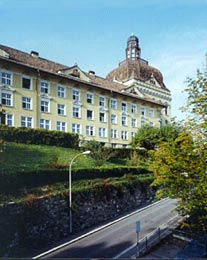 Suva use Generative Programming Tools to Maximize Return on Investment when Integrating Legacy COBOL Applications in a Thin-Client Architecture
Suva use Generative Programming Tools to Maximize Return on Investment when Integrating Legacy COBOL Applications in a Thin-Client Architecture
Suva is the Swiss national accident insurance organization covering 100,000 companies and 1.9 million people. Their challenge was to migrate critical applications from legacy OS/2 fat clients to a distributed thin-client architecture using Java GUI, Windows 2000 servers and Citrix MetaFrame connected to IBM AIX servers with Oracle WebLogic and a central DB2 database running on IBM S/390 mainframes.
"We set an aggressive schedule for this project. We were impressed that using SCORE Integration Suite we managed to consistently achieve productivity improvements of 400% to 600%. We are now working on our strategy for future projects with Delta."
Thomas Müller, Manager Application Architecture and Methods, Suva
The critical business and data access tiers of Suva’s application were developed in COBOL and had to be directly reusable in the new architecture. The presentation tier was to be redeveloped using Java. Oracle Tuxedo was selected for communication from Java clients and the application server.
After a careful evaluation Suva selected SCORE Integration Suite from Delta Software Technology to migrate these critical business applications to the new thin-client architecture.
SCORE Integration Suite is a cost-effective and highly productive solution for exploiting the value of existing legacy applications and data stores by service-based integration. SCORE Integration Suite combines integrated software tools, processes and related professional services to create adaptive services with interface intelligence, service agility and service quality.
In this project SCORE Integration Suite provided Suva with a quick and easy way of taking their existing COBOL business logic and data access tiers and directly reusing them within their very different new architecture. SCORE Integration Suite generated all necessary server-side component and middleware frames in native COBOL to expose existing functionality as services with well-defined interfaces.
Client-side proxies were generated in Java to allow the services to be used by the new Java clients. The platform portability of SCORE Integration Suite enables Suva to use the same server instances with a range of alternatives client technologies. Initial testing is already underway with J2EE/EJB clients.
"We generated services for diverse middleware and platform combinations – SCORE Integration Suite handled this effortlessly."
Thomas Müller, Manager Application Architecture and Methods, Suva
A project as large and complex as this (30,000 source files and 12,000,000 lines of code) naturally raised non-standard requirements and numerous special cases. The flexibility of SCORE Integration Suite enabled the Suva team to solve these requirements.
Using the concepts of "Generative Programming" and early versions of "Pattern By Example" and the "ANGIE" frame-based generator, the Suva team automatically generated a series of non-standard components, including a complex test framework and an additional client proxy layer to integrate with a new Java GIU framework.
Working with SAXOS Informatik AG, Delta’s distributor in Switzerland, Suva was able to maximize the return on investment in their legacy COBOL applications by directly reusing more 5,000,000 lines of COBOL code in the new architecture. The new application is now in production and supporting a full production workload with more than 2,000 clients located at Suva’s 22 branch offices throughout Switzerland.
"With SCORE Integration Suite we see the results of our long-term commitment to generative programming and other emerging technologies. They are already giving our customers a significant advantage in the market, and in today's business environment everyone needs all the help they can get."
Rüdiger Schilling, Managing Director, Delta Software Technology GmbH
Download Language: Englisch - Version: MT21010.07

Suva uses generative programming tools from Delta Software Technology to maximise return on investment when integrating legacy COBOL applications in a distributed thin-client architecture.
Read more